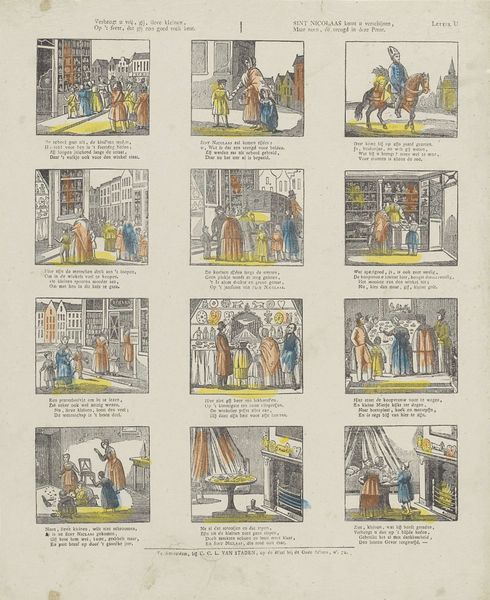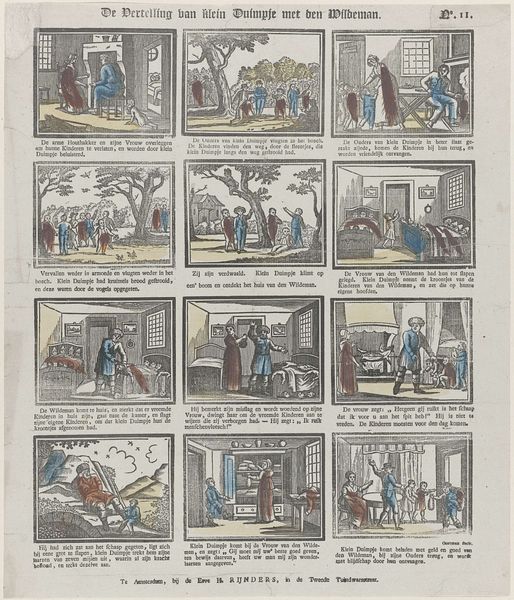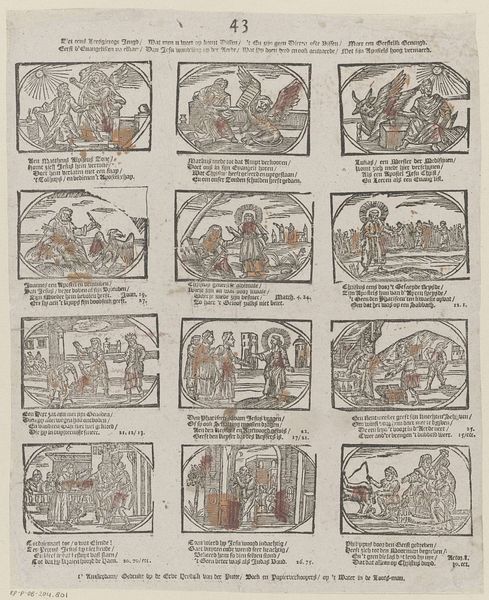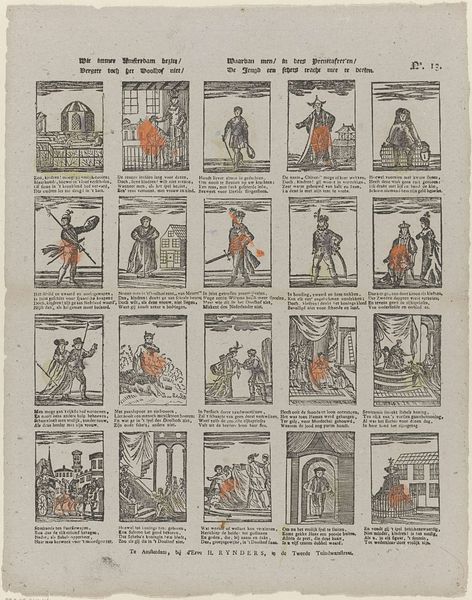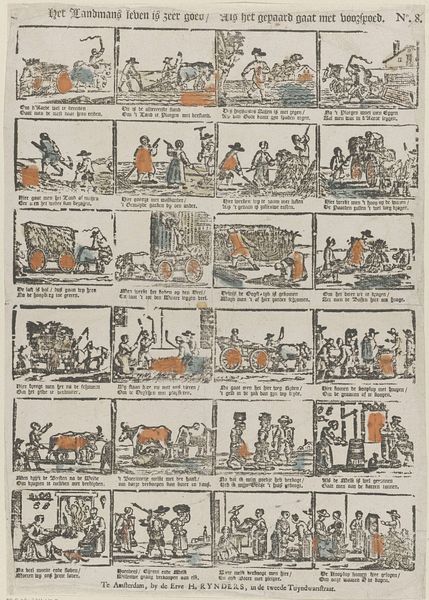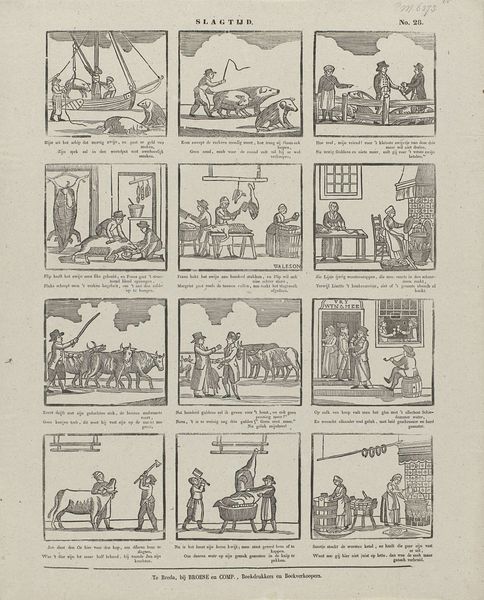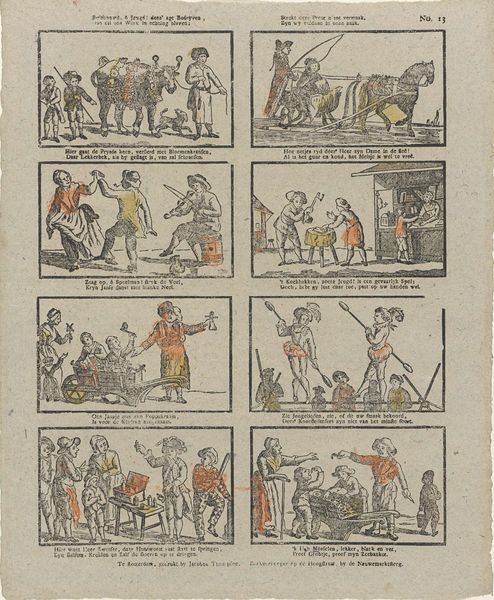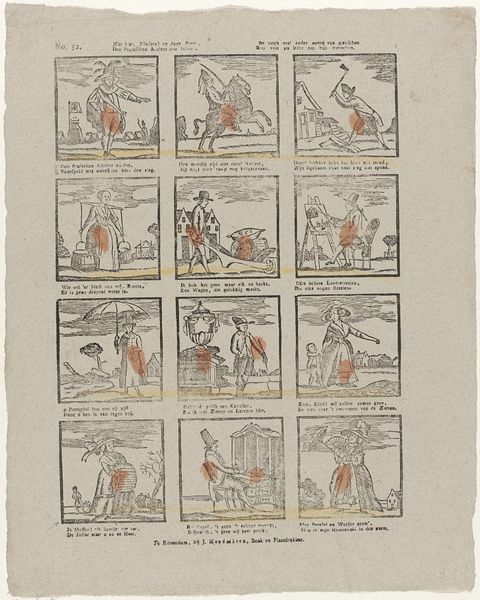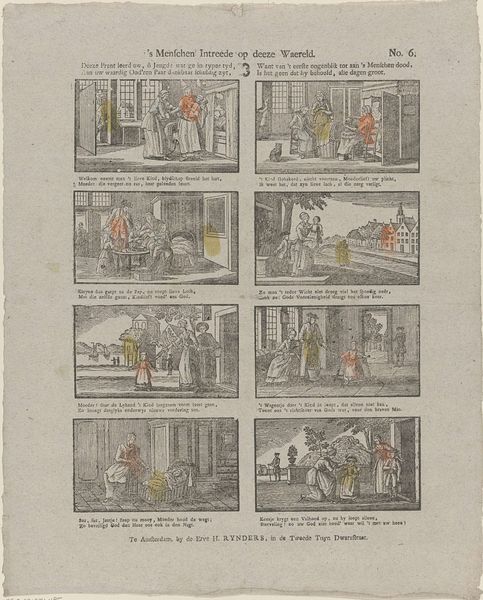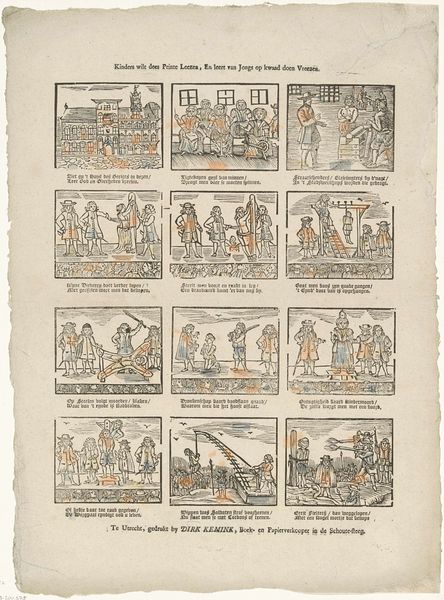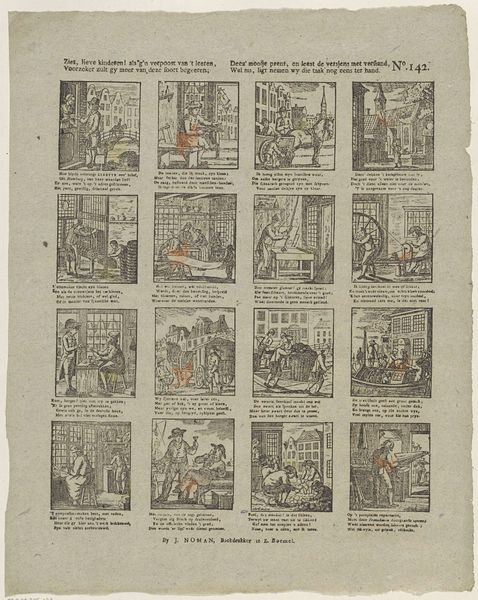
print, engraving
#
narrative-art
# print
#
cityscape
#
genre-painting
#
engraving
Dimensions: height 416 mm, width 337 mm
Copyright: Rijks Museum: Open Domain
Editor: This is "Kinder-spelen", or "Children's Games," an engraving from sometime between 1822 and 1870 by Gerrit Oortman, currently held at the Rijksmuseum. The whole scene seems meticulously planned, each little scene telling a distinct story of play. What leaps out at you when you look at it? Curator: It's funny, isn't it, how looking back, these little snapshots of joy feel almost… quaint. You see children playing familiar games, but within such a rigidly composed frame. Makes you wonder about freedom, doesn't it? Were children freer then, or is it just how we remember, or wish to remember, the past? The visual layout feels more like a structured sampler than a spontaneous street scene. Each little world is framed so distinctly from the other. Are the verses below the little pictures important? Editor: Good point! It appears that each square shows a different activity. I think they're verses, almost like captions, that describe what is going on in each one. So you’re saying that the formal composition takes away from the "playful" quality? Curator: Perhaps "complicates" is a better word. It feels curated, not candid, unlike photographs capturing children’s street life during the same time period, you know? It makes you question the intention behind it: is it a record, or a constructed idea of childhood? Editor: Interesting. I was drawn in by the charm, but now I see the potential for it being…almost a social commentary, or at least, a document with an agenda. It prompts reflection, definitely! Curator: Exactly! And that’s the power of art, isn’t it? What seems simple can hold layers of complexity, prompting us to look a little deeper at our own assumptions.
Comments
No comments
Be the first to comment and join the conversation on the ultimate creative platform.

